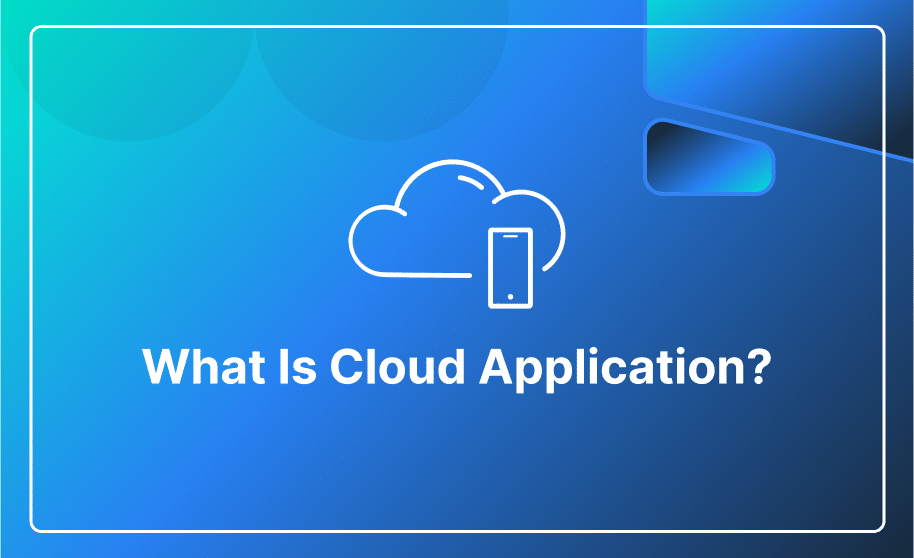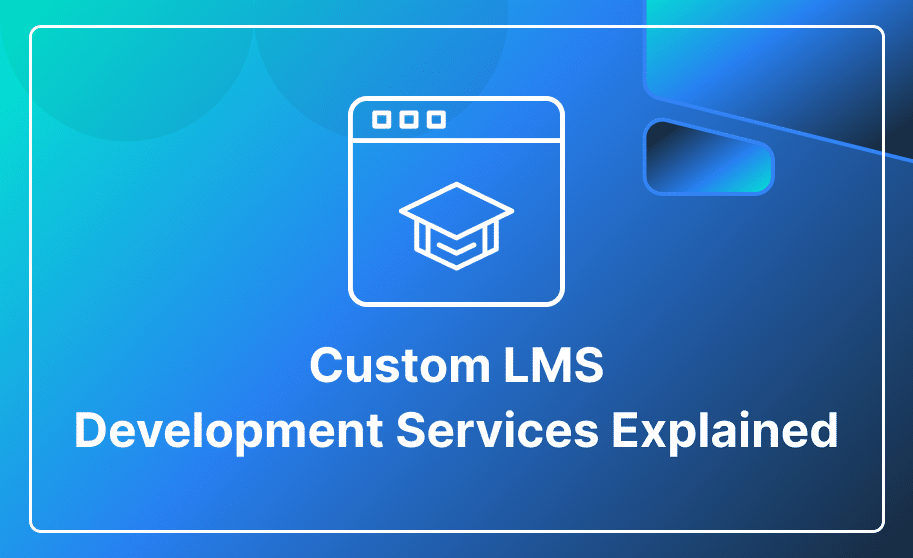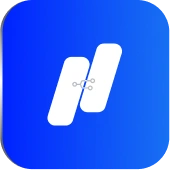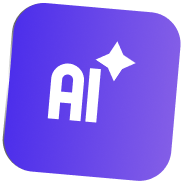How Customized No-Code Development Is?
In today’s tech world, the growing popularity of no-code platforms is challenging the traditional approach to software development. No-code platforms allow individuals to build websites and applications without extensive coding expertise. No-code development platforms provide users with the visual interface, drag-and-drop components, and pre-built modules and templates to create fully functional apps.
In the digital era, the imperative of customization cannot be overstated. Customizing software applications and digital solutions to specific requirements is a foundational aspect of competitiveness.
Customization enhances user experience, fosters innovation, and ensures that technology aligns with your unique business requirements. Consequently, the ability to customize has become a cornerstone for navigating and thriving in the digital landscape.
In this blog, we will explore the boundless possibilities of customizable no-code development.
Demystifying No-Code: Beyond the Basics
No-code distinguishes itself from traditional coding by eliminating the necessity of extensive coding skills. Unlike traditional development, which requires technical expertise, a no-code platform offers a visual interface and pre-built components that allow individuals without coding knowledge to build applications and websites.
Another important aspect that sets no-code apart from technical development is cost-effectiveness. No-code is more cost-effective as compared to technical development. No-code reduces the development cost by eliminating the need for hiring skilled developers, whereas technical development is costly as it requires money, time, and resources.
The evolution of no-code platforms has been marked by a transformative journey from simple tools to sophisticated solutions that are reshaping software development. Initially designed for basic tasks for non-technical users, now these platforms empower users to tackle complex challenges without extensive coding. Beyond small projects, these platforms are now integral in enterprise-level development.
Modern no-code tools offer diverse functionalities, from database management to intricate business logic. As they bridge the gap between technical and non-technical people, no-code platforms continue to drive innovation, promising a dynamic future for software development.
Breaking Down Customization in No-Code
There are various layers of customization in no-code, allowing users to customize visual elements, functionality, and data handling to meet their specific needs.
- Visual Elements:
The no-code platform allows users to customize the visual aspect of their applications and websites without writing lines of code. It encompasses the design of user interfaces, layout structure, color schemes, and aesthetics.
- Functionality:
Through no-code platforms, users can customize the functionality of their applications. It includes setting up workflows, defining business logic, and incorporating automation without writing code. No-code tools offer visual interfaces for creating and connecting different functions.
- Data Handling:
The no-code platform offers customization capabilities for managing and manipulating data. Users can define data models, set up databases, and build connections between different data entities. It allows users to customize data structures that align with their application.
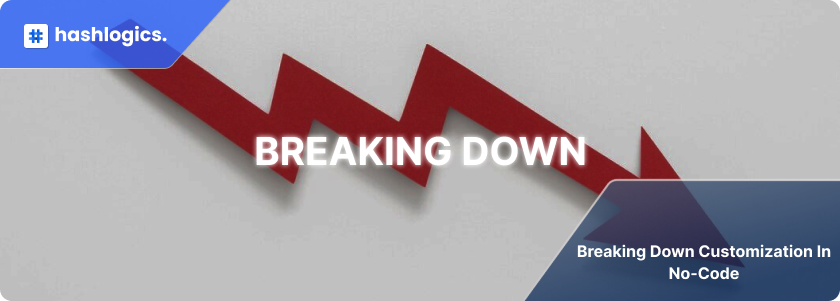
Empowering Brand Excellence
For unique branding and design, no-code platforms provide the flexibility to create a personalized brand identity without extensive design or coding skills. Users can customize logos, fonts, colors, and other branding elements to align their application according to their brand’s identity. Such customization ensures that your app reflects a distinct and professional look, contributing to the brand’s consistency across digital platforms.
Advanced Features and Extensions
No-code platforms offer advanced features like AI integration, automation, and analytics.
AI integration seamlessly infuses Artificial Intelligence (AI) into applications, enabling advanced functionalities such as Natural Language Processing and Machine Learning.
Automation empowers users to design and implement streamlined workflow without intricate coding, enhancing efficiency by automating repetitive tasks and processes.
Analytics allow users to gain insights from data and make informed decisions based on data-driven analysis.
Smooth integration of various systems and data sources is crucial for creating inclusive applications. No-code platforms should provide strong integration capabilities, including APIs and connectors. These integration capabilities allow users to connect their applications with diverse databases, third-party services, or APIs.
No-Code Solutions for Niche Markets
No-code development is revolutionizing industries by offering customized solutions for specific sectors, such as
No-Code for Healthcare:
Healthcare professionals can create and design health apps for patient management, appointment scheduling, or health monitoring without extensive coding.
No-Code for Education:
No-code tools empower educators to create customized platforms for course management, student engagement, and assessment creation.
No-Code for Retail:
Retailers can create applications for inventory management, customer engagement, and online storefronts.
Limitations and Considerations
No-code has certain limitations in terms of customization:
Limited Customization:
Although the no-code platform provides pre-built templates and modules, the level of customization is limited as compared to custom code. This limitation may restrict the ability to create unique and intricate solutions.
Dependency on Pre-built Templates:
Dependence on pre-built templates can constrain originality in design and functionality. This dependency may lead to a more standardized appearance.
Integration Limitations:
No-code platforms encounter difficulties while integrating with complex external services or specific APIs.
When to opt for No-Code or Traditional Coding
Choosing between no-code and traditional coding depends on the project’s specific requirements, timeline, and complexity:
When to Choose No-Code:
Choose no-code development when:
- You need to quickly prototype an idea or develop a Minimum Viable Product (MVP).
- You have limited coding skills.
- For the standardized solutions.
When to Choose Traditional Coding:
Choose traditional coding when:
- Your project demands highly customized and intricate solutions.
- The project involves complex business logic.
- Scalability is paramount.
Future Trends in No-Code Customization
Here are some of the noteworthy trends that are shaping the landscape of no-code customization:
- More intuitive drag-and-drop features, augmented reality interfaces, and enhanced visual elements.
- The rise of collaborative customization.
- Real-time customization features.
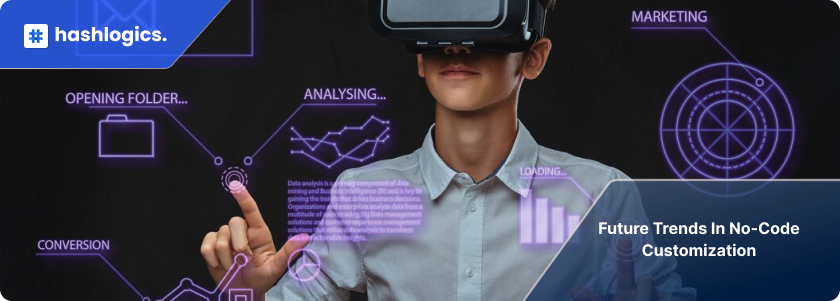
Conclusion
No-code platforms are revolutionizing application development by allowing individuals with and without technical expertise to create robust applications.
No-code development allows for the seamless customization of applications to meet the unique requirements of niche markets, unlocking innovation and efficiency in various industries.
No-code platforms are playing a vital role in shaping the future of software development. To explore further on no-code development, we invite you to read our comprehensive blogs.
“Ready to Customize? Click Here for No-Code Mastery!”


